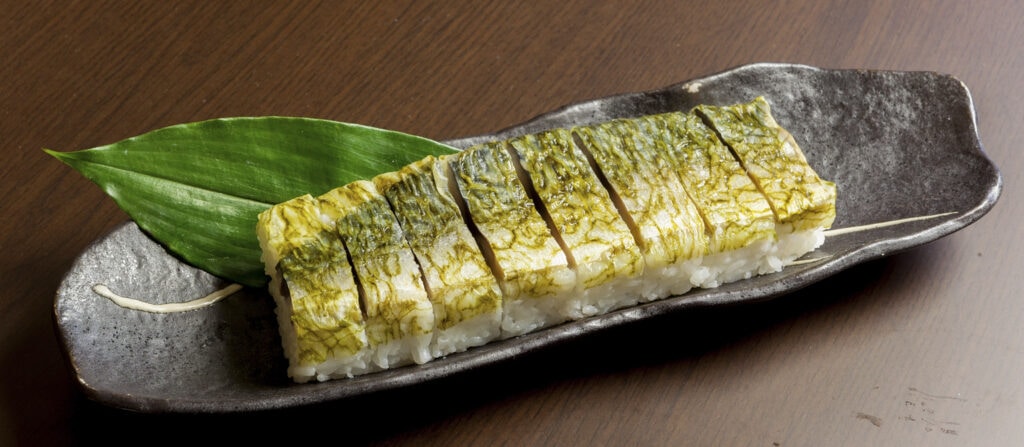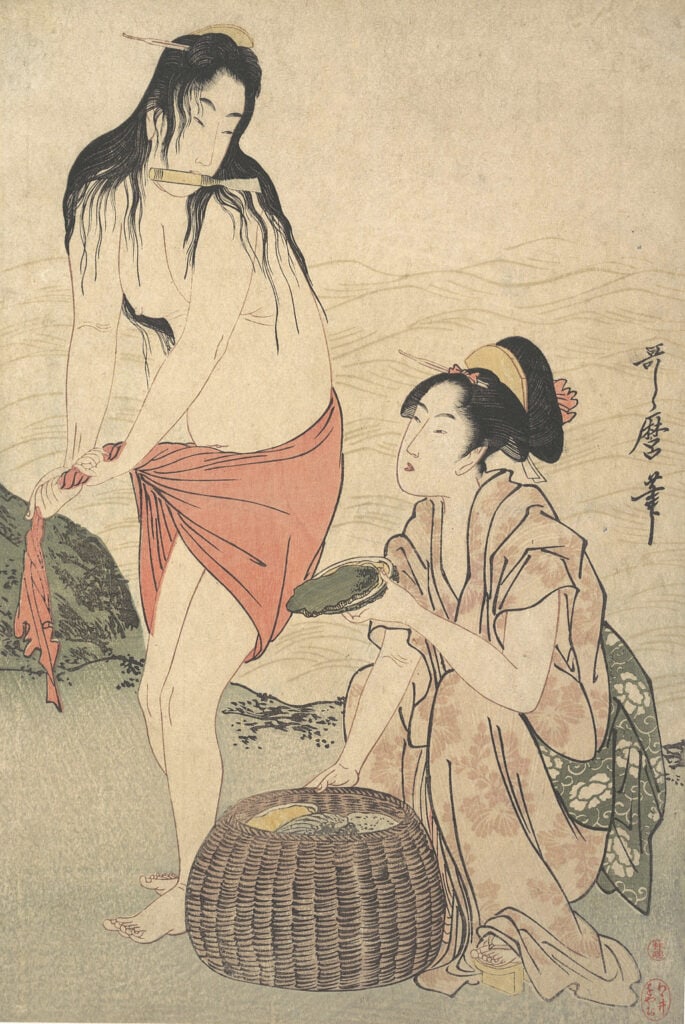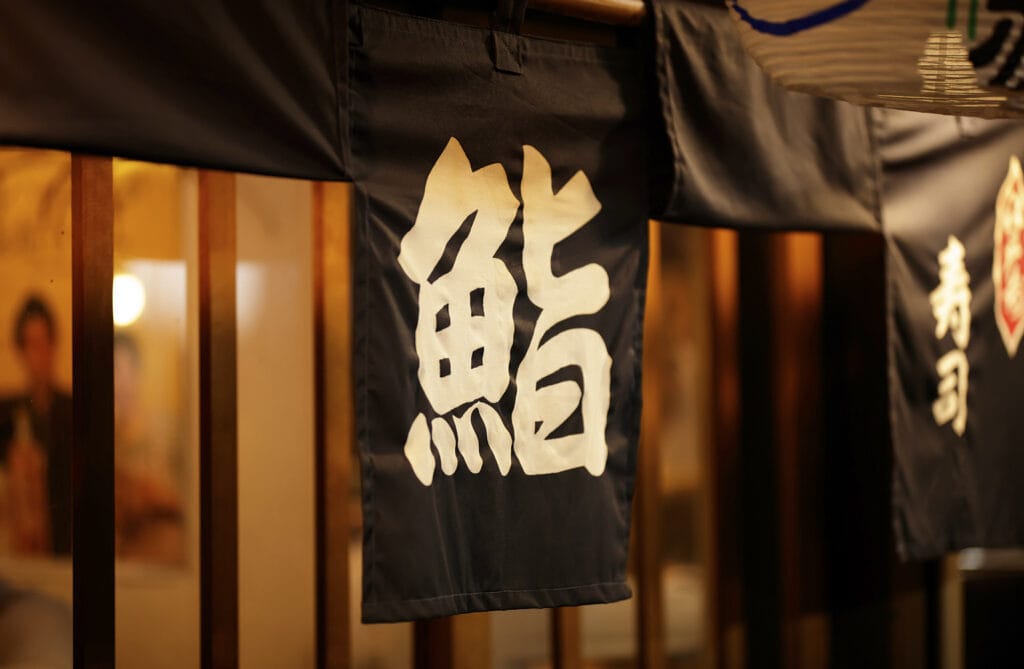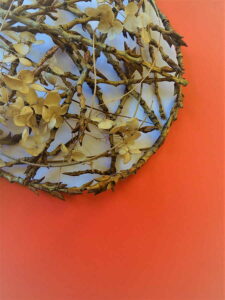Sushi as we know it today is ultimately a development of the second half of the 20th century. The original dish of sushi was quite different from what we know today as Sushi designate
From a pure necessity to preserve fish for long periods of time and keep it edible, sushi has become a luxurious dish known for its supposed quick preparation or ease of consumption. However, sushi has actually undergone an interesting evolution since its inception. Here's everything (that we could find out) about the history and origin of sushi.
The linguistic phenomenon of sushi
What is the meaning of sushi? How do you spell sushi? What does sushi mean in translation? How do you spell sushi in Japanese? First, let's clarify the origin of the word "sushi" again in more detail.
Several characters for sushi
There are different ways to write sushi in kanji - and there is no consensus on why sushi is called sushi in the first place. There are four different spellings of the word, the first is the most common version:
寿司 Sushi
壽司 Sushi
鮨 Sushi
鮓 Sushi
What is the meaning of the characters for sushi?
The first two spellings are identical in meaning. Only the first character differs, with 寿 being the modern, simplified spelling of 壽. The character is pronounced kotobuki in Japanese, which means "congratulations", "congratulations" or "long life". In Sino-Japanese pronunciation JU or SU, it means "long life," "longevity," "old age," or "congratulations." The second character, 司 SHI, means "office," "authority," "official position," or "public servant" in the Japanese reading tsukasa. The Sino-Japanese pronunciation SHI also goes in this direction and is used for vocabulary from the area of "directing," "administering," "authority," and "public servant" (cf. Hadamitzky/Spahn et al.). How should one now connect this with leavened rice and fish?
Presumably, the characters were chosen at a time when it was still customary to assign characters to imported (mostly Chinese) goods or abstract circumstances purely according to the sounds of the Chinese name. Since a uniform orthography, as we know it in Western countries, was only common in Japan in recent times, different spellings were often in circulation for a word. This has remained the case for many terms to this day.
Unclear origin of the word sushi
Today, no one can say for sure where the Japanese word "sushi" really comes from.
What we do know: In China, there were several words for preserved fish. One of them, which was used for acidic fermented dishes, was pronounced something like "chee" (German: "Tschii") at the time. The second syllable of the Japanese "Su-shi" probably comes from this very word. The hard "chee" became a soft "shi" through repeated pronunciation and transfer to the Japanese language. So sushi really doesn't have much to do with the state apparatus - at least until the end of World War II, but more on that later.
The first syllable of the word sushi may come from the Japanese adjective 酸っぱい (suppai, sour). But even this cannot be conclusively clarified today. What we do know for sure: The original version of sushi, the fish sourly fermented in rice, was and is called 熟鮓 (nare-zushi, aged sushi) in Japan.
Different spellings with different meanings
Two more spellings remain to be clarified.
鮨 know the dictionaries with the Sino-Japanese pronunciation SHI and the Japanese pronunciation sushi. The character is used in conjunction with others, such as in 鮨屋 (sushi-ya, sushibar) or 握鮨 (nigi(ri)-zushi, nigiri-sushi).
鮓 is pronounced sinojapanese SA or Japanese sushi. Again, the dictionaries don't know more than that the word is used for leavened rice with fish topping. In these two kanji, it is noticeable that the left side looks the same. If you take the left part of each character by itself, it is the kanji 魚 (sakana), fish. In the context of sushi, this makes perfect sense if we consider that it was originally a method of preserving fish.
The right part of the character is usually considered the character for delicious, 旨(い) (umai). Delicious fish - this is clearly sushi!
Why is sushi sometimes spelled zushi?
And there is another peculiarity in the spelling of sushi in Romanji, that is, when you write Japanese words with Latin letters. There, of course mostly abroad, you sometimes find the spelling "Zushi". Usually this occurs in connection with a certain variety, for example "Nigirizushi".
The reason is quite simple: in Japanese, some syllables are "softened" when combined with other words, converted into a fricative sound. This applies, for example, to sushi, where the actually relatively sharp pronounced "S" then becomes a softer pronounced "Z" in Japanese.
However, the romanji transcription is then also always an interpretation of the Japanese writing systems kanji, hiragana, and katakana, and thus various legitimate possible spellings for the combination of sushi result: nigiri-sushi, nigirizushi, or nigiri-zushi - all ultimately conceivable and simply an attempt to write the characters 握り寿司 in such a way that those of us who do not happen to know kanji can also read and pronounce them.
Historical and geographical origin of sushi
So how exactly did the rice become sushi?
When rice came to Japan, it was not in the form of sushi, of course, but as a grain to meet daily food needs.
Diet of the Japanese until the 3rd century AD
Sushi was not thought of in Japan at that time.
Archaeological findings from the Jōmon period and the subsequent Yayoi period suggest that a lot of meat was eaten. Deer, wild boar, wolves, elephants and other larger mammals still inhabited the Japanese islands at that time. People gathered nuts and seasonal fruits, grew simple vegetables. Chestnuts were already being used. But also shells and fish bones were found in the archaeological sites along the coastlines.
It is believed that people moved to where the food supply was sufficient, depending on the season.
Origins of sushi in the Mekong Delta
The origins of sushi are now believed to be on the banks of the Mekong River. The region belongs to southern China, Laos and northern Thailand. Exactly when fish began to be preserved in rice there is not entirely clear. The oldest remains of rice grains found so far in northern Thailand date back to about 3,500 BC.
Along the Mekong River, fish was always eaten. The river is and was rich in fish. However, the Mekong floods vast areas during the monsoon, which is why the rice farmers of past centuries did not settle directly on the banks. The tide always carries fish to the rice fields far from the shore, so farmers had an abundant supply of fresh fish during the monsoon. When the fields fell dry after the monsoon, however, the fish was also gone.
The obvious thing to do was to preserve the abundant fish so that fish would be available throughout the year (or at least for a while beyond the monsoon).
Early attempts to preserve the fish with salt
At first they tried to pack the fish whole in salt.
However, the enzymes present in the digestive tract of the fish, together with other enzymes, decomposed the fish flesh, and the proteins were broken down into individual amino acids. The result was a not quite appetizing smelling paste, which is the origin of today's fish sauce in Asian cuisine. The salt meant that dangerous bacteria had no chance - the paste was still edible. In Japan, this form of preserved fish is still consumed today as so-called shiokara.
Gutted & cleaned fish is stored in rice
But large quantities of salt were not always available. So at some point people came up with the idea of gutting and cleaning the fish and then storing it wrapped all around in cooked rice in a tightly sealed jar.
It worked: Mold quickly grew in the container, breaking down the carbohydrates in the rice into sugars. The ever-present yeast fungi converted these sugars into alcohol, which in turn made the remaining sugars inedible to the bacteria also present in the air (and in the jar). Nearly all bacteria that make food inedible to humans require oxygen. The bacteria that don't need oxygen are mostly harmless or even wanted in food. The rice ensured that no oxygen got to the fish. The bacteria in the rice digested the remaining sugar and gave off lactic acid and acetic acid. So the rice became acidic. And this prevented the fish from decomposing further. This is because the acids kill the bacteria.
The fish gains flavor
The fish treated in this way did not turn into a funny smelling sauce but remained recognizable as fish. And it could still be eaten for about a year. The rice, on the other hand, was thrown away.
However, the fish had changed in taste: The typical fish flavor had been joined by an aroma of well-aged cheese, with some buttery notes and the nuance of vinegar.
This preserved fish is now considered the origin of sushi.
From Thailand, the method spread throughout China and later to Japan.
Year 718: Tax debts in Japan can also be settled in sushi
In Japan, people were taken with this very special fish meal, even from today's perspective. How much, as evidenced by a Japanese document from the year 718.
The government stipulated that people could pay their tax debt in sushi (cf. Corson, p. 29). Sushi in Japan at that time was a dish of the nobility and for very special occasions. After all, you had to wait almost a year to eat the fish with the special flavor.
Until the 9th century mainly freshwater fish
Until the ninth century, people in Japan mainly used freshwater fish from lakes and rivers for sushi.
Then crustaceans began to be used sporadically. Especially abalone and mussels found their way into nare-zushi. In China, by the way, sushi disappeared again during this period. But in Thailand the dish is still prepared today. A variant of it is also still known in Taiwan.
Around Lake Biwa near Kyoto, funa-zushi is still served today (see https://sushi-all-japan.com/index_b2_1.html). The exclusive dish is prepared in a similar way to the original sushi, with female crucian carp from Lake Biwa serving as the fish. Funa-zushi is considered a typical snack served with sake.
Development of sushi in modern times
Around the year 1400, people ate the fish so quickly after pickling that it was still relatively fresh inside. The cheesy nuance was missing, but the fish tasted sour. And it was noticed that the rice was also still edible at that time and did not have to be thrown away. The dish of preserved fish now became a rice dish, and the fish was a side dish.
Around 1600, the lightly fermented fish with rice was called nama-nari (also nama-nara), which translates roughly as "ready raw" or "aged raw. Nama-nari only had to ferment for a maximum of one month; depending on the environmental conditions, the dish could be enjoyed after just a few days.
By now, at the latest, the fish side dish had become a complete meal of fish and vinegar rice. However, sushi was still a luxury product in Japan at that time and not a necessity or livelihood.
From ancient texts we know that the sushi chefs of the time surprised their noble clientele with ever new ingredients.
At this point, fish from the sea came into play, probably various shellfish, octopus and squid also found their way to the rice.
Development of cities leads to the spread of sushi
We are now in the Edo period. The capital had been moved from the old imperial city of Kyōto to the former fishing village of Edo on what is now Tōkyō Bay. To accomplish this, the city was built up. This was a lengthy process that required the presence of numerous ordinary workers.
The nobility stayed in Edo at least temporarily to be close to the center of power. The nobility brought their entourage with them, and the people had to be fed. Cookshops flourished in the streets of Edo. Hot noodle soups with nutritious ingredients were prepared and served in the streets. And sushi. But by this time, people already knew vinegar for souring rice.
Let's take a look at how this came about.
Sour - rice vinegar allows quick enjoyment
Even though people had become relatively quick at making sushi by the 1600s, it still took several days to a month before the rice and fish developed their characteristic sour taste.
Around this time, resourceful sake producers had a pioneering idea. They fermented the dregs produced during sake production with bacteria. These bacteria developed acetic acid. And thus rice vinegar was born. In addition to acetic acid, rice vinegar contains about seventy other flavor components, such as amino acids, organic acids, various sugars and esters.
Quick sushi without fermentation
A shogun's doctor added some rice vinegar to sushi rice in the second half of the 17th century and found that the sushi rice tasted excellent this way, even without fermentation.
Since then, sushi rice is no longer cooked and fermented for several days or weeks together with the fish.
The lactic acid that the bacteria produce in this process have given way to the rice vinegar. At the same time, the rice vinegar kills bacteria - so the rice and fish stay fresh even longer. The new dish was called 早寿司 (haya-zushi), quick sushi.
In modern Japan, things have to go even faster: Both rice vinegar and the perfectly cooked (and sometimes already seasoned) sushi rice have become mass-produced industrial products.
Genealogies of the Sushistile
While rice vinegar was added to sushi rice quite early, sugar was not added until the 17th century in the area around Kyōto. Put simply, to this day you can tell exactly where the sushi chef is coming from by the taste of the rice: the further you move away from Tōkyō (vinegar-sour rice) to Kyōto (sweet rice with little acidity), the sweeter the sushi rice becomes.
The way of making sushi and especially seasoning the rice is still passed down from master to student.
There are whole genealogies of sushi styles that are attached to the nikiri in addition to the treatment of the rice.
Interesting to add at this point, by the way, that the residents of what is now Tōkyō developed an amazing taste for sweets after World War II, and sushi has become somewhat sweeter here as well since the 1950s.
Where Edo-mae sushi comes from
Sushi in the form we know today, goes back to the Edo of the 17th century.
The capital of Japan had just been moved from imperial Kyōto to a former fishing village called Edo, which lay directly on a small but fish-rich bay.
In Kyōto at that time, people ate haya-zushi, fish fillets laid out on rice in a box and pressed. These massive pieces were then cut into pieces like cakes and served. The fish, it was found, developed its peak of flavor about four days after its death. An entire trade formed around the need to deliver the fish from the rivers, lakes and bays to Kyōto in the morning after exactly four days. Couriers at this time were still mostly on foot.
Along with the capital, the upper class, from the nobility to the military, moved to Edo. Everyone who was anyone maintained at least a small second home in the new capital. Workers swarmed into the fishing village to build up the necessary urban infrastructure for so much pop. These workers needed to be fed. Street stalls selling hot noodle soup sprouted like mushrooms. Edo burned down almost completely twice in quick succession because the hot noodle soup in the small wooden shacks was literally incendiary.
How sushi became the street food of choice in Edo
The "soup kitchens" were banned. Resourceful businessmen set up sushi stands. Cool rice and raw fish needed no fire and also made people full.
The typical sushi stand at the time consisted of a counter behind which the sushi chef sat on a pedestal pressing the sushi and handing it directly to his customers. The clientele stood on the street. A rag hung from a post in front of the counter or directly below it for customers to wipe their rice-stained fingers on after their meal. The dirtier the rag, the better the sushi, they said back then.
But also in the Edo period sushi stands reinvented themselves again and again. The "curtains" in front of Japanese restaurants known today as noren date back to this use. However, no one today would wipe their fingers dirty from eating on the noren.
What was served in Edo, however, was no longer reminiscent of the haya-zushi of Kyōto, but was in fact what we know today as nigiri. The quickly pressed, elongated pieces of rice were topped with more or less fresh fish. Edomae sushi was the name of this form of sushi. "Edo" is self-explanatory; "mae" means "before." Edo-mae was the designation of origin for anago, the saltwater eel caught and sold just outside Edo. The fish for Edomae sushi came from here.
So sushi at that time was the fast food of the working, urban population and commercial travelers.
Raw fish without refrigeration?
Before sushi became the dish with lots of raw fish that we associate with the term today, a lot had to happen.
The old Edo knew neither freezer nor refrigerator. Fish was cooled, but only with the ice that was available from frozen rivers.
Historical sushi was fried, roasted or marinated
That is why the fish of the Edo period sushi was never raw. Anything that was perishable was either fried or roasted over an open flame or marinated. Marinated in most cases meant that the sushi chef soaked the fish in soy sauce for at least a few hours.
Alternatively, the fish was salted or marinated in vinegar. Raw, fresh fish was not an option even in Edo on the fish-rich bay. In addition to spoiling raw fish, the treatment was also intended to kill worms such as anisakis, a parasite still feared in Japan today.
As of the 1960s, about half of Japanese households had a refrigerator. Things had also changed in the commercial sector; now ships with refrigeration technology were already fishing, processing and deep-freezing the fish on board.
Properly raw fish in sushi becomes only in the 1970s
However, it took until the 1970s before sushi could truly be prepared safely and with raw fish, including fish that do not live in the waters around Japan.
At that time, Japanese airlines were already transporting goods and people all over the world - but the planes flew back empty. This was not very economical. With increasingly better (and lighter) refrigeration technology, it became possible in the years after 1972 to transport freshly caught raw fish frozen all over the world. Now tuna was arriving in Japan from Canada and the Mediterranean. But for Japanese to eat tuna, more had to happen.
Sushi changes with the development of society
Of course, it did not remain with the street sale "on the hand". Sushi was quickly sold in boxes as a kind of take-out. Especially around entertainment venues such as bathhouses and theaters, nigiri could be found in the snack box.
The Second World War was an important turning point. Edo, by this time already renamed Tokyo, was already burning down again. Edomae sushi was once again carried throughout Japan by fleeing sushi chefs. During and after the war, however, food was scarce. Rice in particular was in short supply. To get the Japanese economy moving again, the American forces in Tokyo allowed a special experiment: customers could take their own rice to the sushi bar and have it prepared as sushi. It was strictly regulated how much rice had to make how much sushi. The type of fish used was also strictly regulated. Surprisingly, this worked very well, so this system was extended to the entire country. However, since the regulations were based on Edomae sushi, only Edomae sushi was served throughout Japan for a while after World War II.
Street food becomes hygienically separated areas
Over time, the street stores also disappeared after the war. For hygienic reasons, the sushi was brought indoors.
At first, counters and partitions facing the street were the rule, then some sushi chefs built a counter inside. Separate rooms with tatami where guests could eat seated were added over time. To this day, sushi stores can be found in the various neighborhoods of old Tokyo, dating back to 18th- and 19th-century foundations (see https://cuisine-kingdom.com/sushi-keifu). The sushi bars were born.
Typically Japanese: taking influences from the West and making them a trademark
Sushi eventually made the leap to the West thanks to the wild 1960s in Los Angeles.
This is where the California Roll was invented, where resourceful chefs created the Inside-out Roll and other modern interpretations of sushi.
In the beginning, only a few Japanese customers came to the small and rare sushi bars. Probably driven by homesickness, they enjoyed the dishes from home.
A few men worked to make the pleasure of sushi accessible to a Western audience. New ingredients were used, the creations were adapted to the Japanese taste.
Japanese travelers found the American interpretation of sushi so interesting that the various concoctions found their way back to Japan. In Tokyo today, maki sushi is served, which was not even known in this form before 1960.
Avocado, salmon and even tuna (!) were historically not eaten at all in Japan - meanwhile, these are classics in the sushi bar. And when it comes to the Japanese chefs are now recognized as masters and role models for Western starred gastronomy as well..
And because of the triumph of sushi on the West Coast, in Europe and then throughout America, there are now even female sushi chefs, in Japan and in the West.
From chance find to street food to high art
Thus, from the pure necessity of preserving fish first developed a dish for nobility and high-ranking members of society.
This dish was transformed into typical street food, fast food of the Edo period. At the same time the toppings used for sushi changed over the centuries and partly absorbed influences from abroad.
Today, sushi in Japan is both. In Tōkyō, you can still find the occasional small sushi bar with an attached street vendor, where you can get exclusive delicacies prepared by the chef himself for little money.
At the same time, there are family-friendly restaurants that offer classic sushi as well as inexpensive Western-influenced recipes.
And of course, the deeply iterating Japanese have also developed the craft of sushi today to an unimaginably high art: experienced masters who know and have worked out infinite details to produce the perfect sushi from the best possible ingredients, who have the manual dexterity, which is necessary for ultimate enjoyment. Because in the taste of each individual sushi, the manual processing is an essential element and thus the dish sushi in the end is subject to a completely different manual requirement than Western cuisine, fried and boiled dishes.
Sushi in its highest form is today per se absolute star gastronomy, even if the necessary depth and preparatory work for high quality is not understood by all people in the West. More about this in our series on sushi quality, which will be published soon and then linked here.

Appendix: sources used and further information
https://www.mizkan.co.jp/sushilab/manabu/0.html
https://rekishi-memo.net/japan_column/sushi.html
https://sushi-all-japan.com/index_b2_1.html
https://1200irori.jp/content/learn/detail/case17
https://jpnculture.net/sushi/
https://gogonihon.com/de/blog/japanisches-sushi/
Click the button below to download the content from jpnfood.com.
https://www.pbs.org/food/the-history-kitchen/history-of-sushi/
https://www.japandigest.de/kulturerbe/geschichte/geschichte/yayoi-zeit/
Click the button below to load the content of www.rokaakor.com.
https://ja.wikipedia.org/wiki/%E6%B1%9F%E6%88%B8%E5%89%8D%E9%AE%A8%E8%81%B7%E4%BA%BA%E3%81%8D%E3%82%89%E3%82%89%E3%81%AE%E4%BB%95%E4%BA%8B
Click on the button below to load cuisine-kingdom.com content.
Click on the button below to load cuisine-kingdom.com content.
Click on the button below to load cuisine-kingdom.com content.
https://www.sushi-guide-morita.de/index_jp.html
Click on the button below to download the content of antikewelt.de.
Buruma, Ian: Japan Behind the Smile. Gods, gangsters, geishas. Ullstein Paperback, Frankfurt am Main 1988
Corson, Trevor: The Story of Sushi. An Unlikely Saga of Raw Fish and Rice. Harper Perennial, New York 2008.
Hadamitzky, W.; Spahn, M.; Putz, O., Arnold-Kanamori, H. et al: Langenscheidt's Large Japanese-German Dictionary. Character dictionary. Langenscheidt, Berlin and Munich 1997
Ienaga, Saburō: Cultural History of Japan. Iudicium Verlag, Munich 1990
Issenberg, Sasha: The Sushi Economy. Globalization and the Making of a Modern Delicacy. Gotham Books, published by Penguin Group, London 2007.
Marra, Michael F.: A History of Modern Japanese Aesthetics. University of Hawai'i Press, Honolulu 2001
Naumann, Nelly: The Myths of Ancient Japan. Anaconda Publishing House, Munich 2020
Tomiyama, Yoshimasa; Miura, Yukio; Yamaguchi, Kazuo:Ikubundo Japanese-German Dictionary. Ikubundo Publishing House, Tokyo 1996








